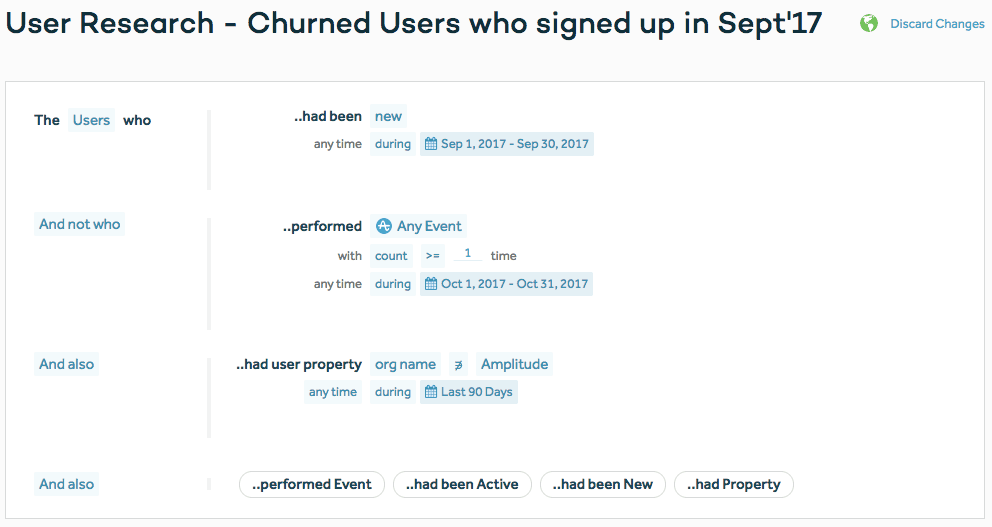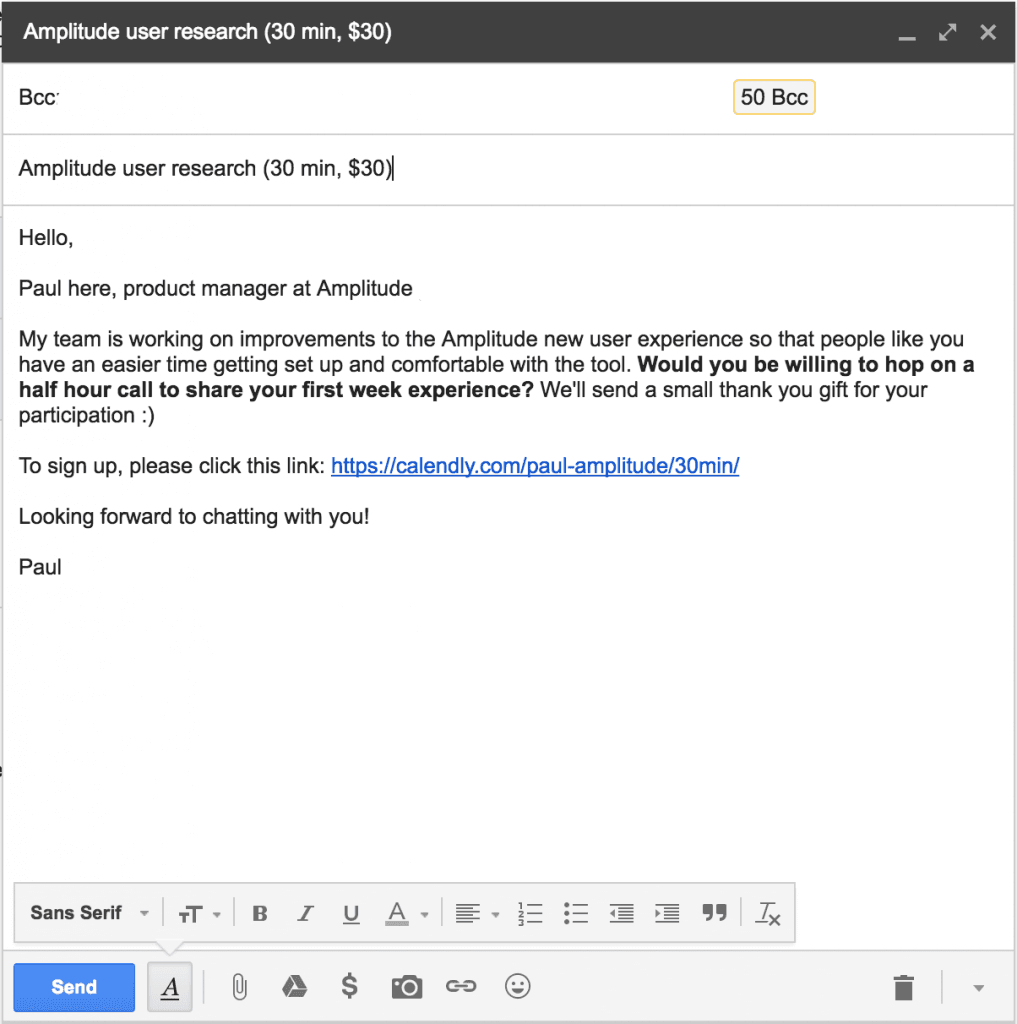Stop Putting Off User Research with These Hacks
Learn 7 hacks that we use at Amplitude to make your user research easier and more streamlined to save both money and time.
Early in my career as a product manager, I remember being introduced to the process of user research in a way that made it seem like a monumental undertaking.
A typical user research cycle looked like this:
- write up an agenda
- draft an invite email template
- find an analyst to help pull a list of user emails
- send the emails
- deal with email threading to schedule calls
- deal with cancellations and rescheduling
- write notes
- juggle payments
What a drag! With all of those steps, user research became a chore. It sat on my to-do list for weeks, stressing me out and undermining all of my team’s designs and conversations with internal stakeholders. Between all the stakeholder wrangling, bug chasing, design reviews, and meetings, it oftentimes just wouldn’t get done.
Over time, I’ve found ways to make my user research less painful. It’s helped me eliminate any excuse to not get in front of users regularly, and make sure that I, and my team, are never flying blind as we build product. I hope that these hacks will be helpful to other product people with user research burning a hole in their to-do lists.
7 tips to help you actually do user research
Hack #1: Forget a detailed agenda – have a learning objective, and follow good practices.
Let the user drive the discussion, and ask why repeatedly until you get to a root cause. If your agenda is a list of questions, and your plan is to just go down the list, then you could have just sent a survey. Let your user research subject guide the conversation and if they don’t bring up your pet feature or pain point, maybe that’s a sign that it’s not as valuable as you thought!
Hack #2: Pull the user research subject emails yourself – don’t let yourself be blocked by a data analyst.
Too many product teams still treat analysts and data scientists like human-interfaces-to-sql. The time it takes you to write out a request, and deal with the internal back-and-forth, is time you could have spent elsewhere. Instead, use a product analytics tool to do it yourself. Tools like Amplitude let you identify the users who engaged with a particular feature that you are interested in and filter based on other demographic attributes.
Below is an example screenshot of how we use Amplitude Analytics (at Amplitude) to identify a group of users who signed up in September but then didn’t come back in October.
Here’s how we use Amplitude to identify specific users for user research.

Hack #3: Forget fancy email platforms – just use bcc in your personal email.
A small user research email blast doesn’t need to be sent from your company’s email platform, and doesn’t need approval from the outbound team. Your personal email will likely get more clicks anyway. Plus, this process scales easily: you can bcc up to 100 people at a time and you can modulate the compensation and call duration as needed. The below email template got 12% conversion to a scheduled call:
This is an email I used to send to potential user research subjects. It got a 12% conversion rate to a scheduled call.

Hack #4: Use a calendar scheduling tool to avoid the back-and-forth.
Calendly, Mixmax and Google Calendar all offer the ability for a recipient to pick a free time on your calendar. These tools connect to your work calendar so the interviewee can easily select a time slot where you’re free and automate the calendar scheduling and reminders for both parties. Pretty awesome.
You can also edit the calendar event so it links to a permanent video conference via a tool like Zoom, or Google Hangouts. Example below:
Adding a video call to your user research calls automatically, is a great way to save time.

Hack #5: Get a coworker to take notes.
Taking notes is something you can’t skip out on since you need them to ensure that the user insights scale company-wide. But asking questions, listening to answers, AND taking notes all at the same time is a lot to handle. Ask someone to join you and take notes while you drive the research so that you’re not stuck trying to remember and summarize it all later.
Hack #6: Keep a Hero panel.
Your Hero panel are your users who love your product and are enthusiastic about giving feedback. At StrideDrive, our heroes were quick to hop on a call to outline bug reproduction steps, and invaluable when getting feedback on power-user feature improvements. Offering folks a spot on your Hero panel gives you an outlet to get feedback even faster in the future. Collect their phone number and text them when you need quick thoughts, or put them on a Google group and have your designer email them with in-progress designs. It’s not a replacement for outbound user research, but often times speed matters more.
Hack #7: Automate the whole process.
Use your email platform or product analytics tool to set up a triggered research invite email with a calendar schedule link. You can set one up to send to some percentage of users a few days after they signs up, or after they interact with a particular feature. It’s magical to see user research calls show up on your calendar automatically.
Those are my hacks. If you have your own, please leave a comment – I’d love to hear about them!

Paul Koullick
Former Sr. Product Manager, Amplitude
Paul was formerly on the product team at Amplitude. Previously, product @StrideHealth, product analytics at @Square, and Harvard math & computer science. When not digging into retention curves, Paul likes to play chess and jog along the SF Embarcadero.
More from Paul




